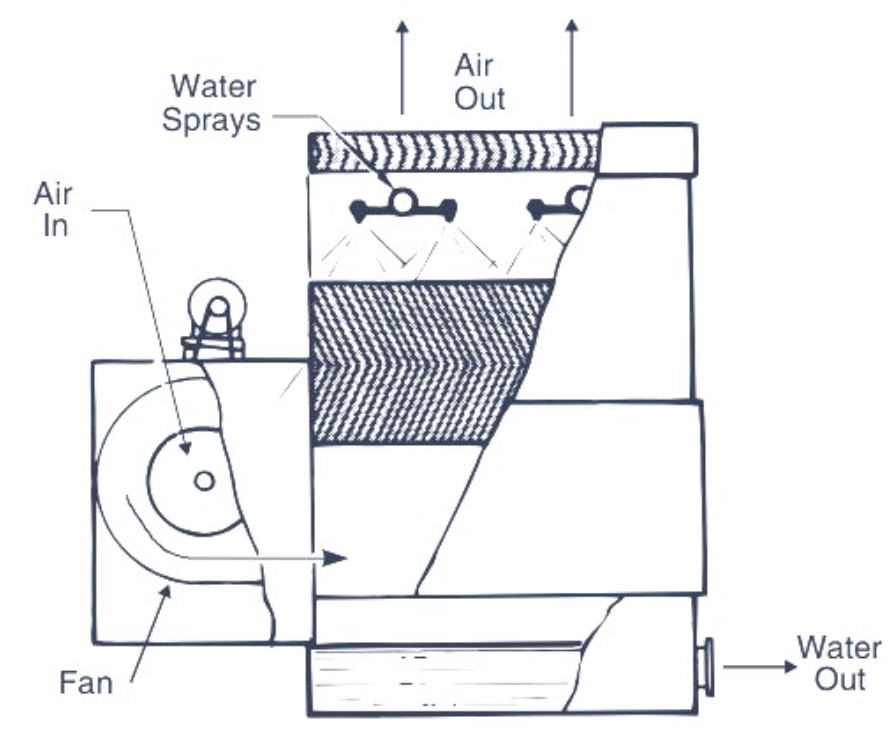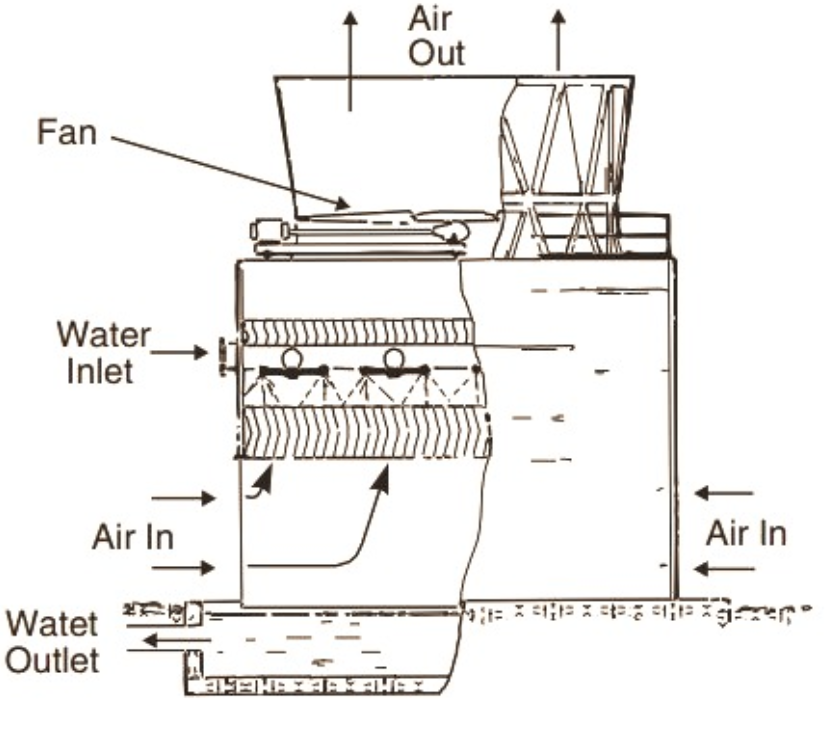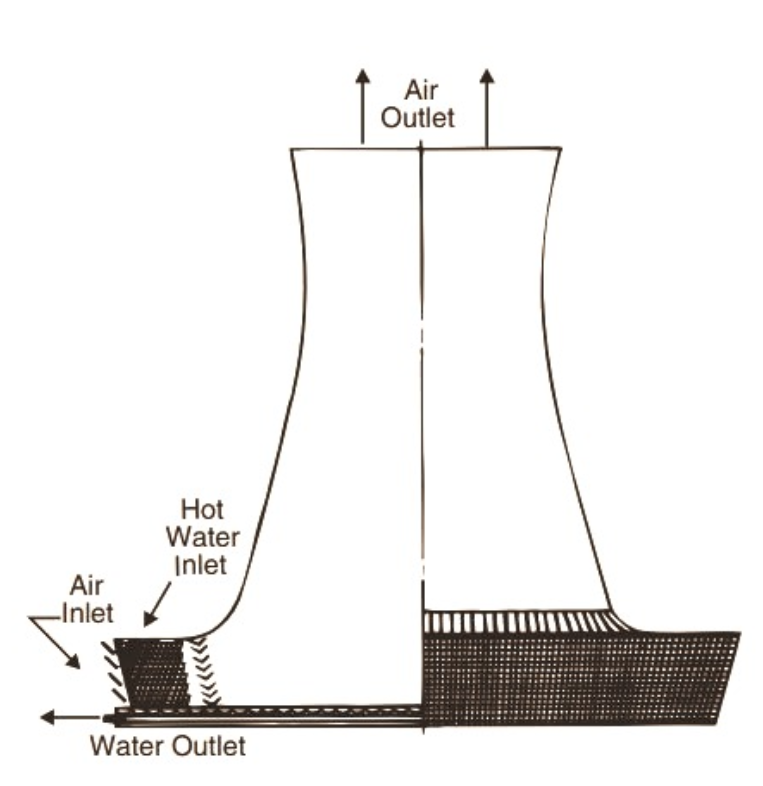A cooling tower is heat rejection equipment that is used to reject the waste heat to the atmosphere through the cooling of a water stream. They generally use the evaporation of water to remove process heat and cool the working fluid (normally cooling water) to near the wet-bulb air temperature. However, closed-circuit dry cooling towers can also find in some industries. These types of towers rely solely on air to cool the working fluid to near the dry-bulb air temperature. The height of a cooling tower may vary in different situations. The highest tower in the world has a height of 663 ft (202 m) and it is installed in India.
Read More: Classification of Heat Exchangers
Classification of Cooling Towers
Cooling towers have different classifications:
1. Classification based on flow direction
Cooling towers have two types based on flow directions.
- Crossflow: the air moves horizontally across the downward flow of water.
- Counterflow: the air moves vertically upward against the downward fall of the water.
2. Classification Based on Air Draft
Cooling towers have two types based on this classification:
a. Mechanical Draft Towers
Fans are used to move the air through the cooling tower. The performance of the tower has greater stability because it is affected by fewer psychrometric variables. The fans provide a means of regulating the airflow. Mechanical draft towers are further characterized in two types:
i) Forced Draft Towers
The fan is located on the air stream entering the tower. This tower is characterized by high air entrance velocities and low exit velocities; therefore, the towers are susceptible to recirculation thus having lower performance stability. The fans can also be subject to icing under conditions of low ambient temperature and high humidity.

ii) Induced Draft Towers
In this type, the fan is located at the air exit. This causes air exit velocities which are three to four times higher than their air entrance velocities. These types of towers are frequently used due to improved heat dispersion and reduce the potential for recirculation.

b. Natural Draft Towers
In this type, no fan is used to circulate the air through the tower. Air naturally (as the name suggests) flows through the tower and exchangers the heat. Natural draft towers further have two types.
i) Atmospheric Spray Towers
These types of cooling towers are dependent upon atmospheric conditions. No external mechanical devices are used to move the air. They are used when small sizes are required and when low performance can be ignored.

ii) Hyperbolic Natural Draft Towers
These towers are extremely dependable and predictable in their thermal performance. A chimney or stack is used to induce air movement through the tower.
